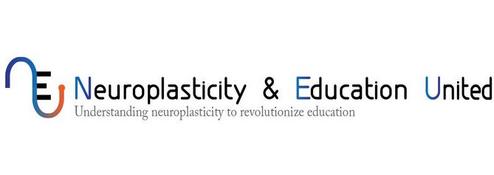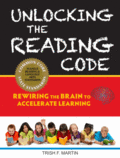Trish F. Martin, President
contact@unlockingthereadingcode.com
616.676.READ
Literacy Brain Connection, LLC
Many of us have “turning points” in our careers. They grab us, shake us up and change us forever. We can never go back to the way we did things before. We become passionate about sharing these new revelations with others so they too are changed forever. This is my quest, my driving force, my passion, and I invite you to take this journey with me.
Here is my journey:
I left the college experience with a toolbox full of ‘academic’ knowledge but limited ‘real time’ knowledge of kids, their ability to learn or what to do when they did not. With degree in hand, I was confident that I possessed the skills to make a meaningful difference. As I reflect on my 30+ years in education, mostly as a speech pathologist, I was privileged to have the opportunity to work with all types of learners. I worked with hearing impaired, autistic, articulation and apraxic, cleft palate, stutterers and the preschool population. Two areas however, drew the most of my attention and led me down my career path.
Students with language delays and/or deficits generally had a difficult time processing information requiring auditory processing. They frequently had difficulty sequencing items, whether this involved sequencing the correct sounds in words or accurately sequencing the words themselves to make a correct syntactical sentence. A high number of these students later showed difficulties with reading, spelling and writing and by third or fourth grade were often labeled as learning disabled. The second group involved students with brain injuries, and they too showed difficulties which lead to problems with reading, spelling and writing. Pursuing educational success for these students, led to my interest and studies in neuroplasticity. What people don’t realize is that most of these students had normal IQ, so there had to be a way to build academic success.
Because other classmates or siblings were able to get it, they frequently turned to the notion that something was ‘wrong with the child’. Rarely was the question posed, “What else do I need in my educational toolbox to help this child be successful?” Parents and teachers alike embark on having their child tested by school personnel to figure out ‘what’s wrong with the child’ or to the family physician who may diagnose attention deficits. Sadly, the perception is that the fault must squarely be on the ‘child’. This is generally NOT the case. Quite often, it is our present ‘toolbox’ of teaching strategies that is not sufficient and resting the blame solely on the child has become far too convenient.
History: A Journey of Turning Points
TURNING POINT #1: (Motherhood)
I have two very amazing children; however, I realized that my own children were very different from one another. I marveled at this reality given the fact that they came from the same gene pool. They grew up in the same home, with the same environmental and educational experiences. They listened to me read the same stories at the same time. They shared the same vacations, the same dinnertime conversations, endured the same probing questions I asked—yet their learning continued to be different.
TURNING POINT #2: (Misperceptions)
At some point, I had to acknowledge that just because you ‘want’ your child to learn and master a particular skill, doesn’t make it so. How frequently I hear teachers and parents state they have tried everything with “Johnny” or “Susie”, and they
just don’t get it. Many adults make the assumption that their child should learn the way they remember learning.
After spending several years instructing educators through my professional development series, I began pre-testing the audience to determine their prior knowledge on required foundational reading components to successfully improve literacy skills. (No names required) This exercise was a revelation. After testing hundreds of attendees, I learned that higher education generally had not adequately prepared teachers on the components of reading or how the English language goes together. Teachers and parents cannot teach what they do not know.
TURNING POINT #3: (Testing…1, 2, 3)
After learning the information from turning point #3, I set out to develop a program that would incorporate the scientific knowledge of neuroplasticity –rewiring the brain while instructing the necessary components of reading and the English language.
TURNING POINT #4: (Empowerment)
Teachers are in the unique profession of building student’s brains, and subsequently influencing their student’s abilities to learn any new information. This profound impact can dramatically shape the lives of our youth. But much of this tremendous power to stimulate and drive new pathways in students’ brains, depends on how they present the content. It is important for teachers and students to understand that the brain gets better at whatever it repeats over and over. By applying the proper techniques with time and practice, significant improvements can be made in one’s ability to perform any task. The act of working hard at something is what drives the brain to form new and stronger connections in what is now called brain plasticity.
TURNING POINT #5: (Concluding Thoughts)
When these skills were taught to students significantly below grade level benchmarks, a dramatic change took place. These students radically improved their reading fluency and were able to become successful independent readers and spellers. When these skills were taught to students at or above grade level benchmarks, they also significantly accelerated their learning—far surpassing traditional reading developmental rates.hen these skills were taught to students significantly below grade level benchmarks, a dramatic change took place. These students radically improved their reading fluency and were able to become successful independent readers and spellers. When these skills were taught to students at or above grade level benchmarks, they also significantly accelerated their learning—far surpassing traditional reading developmental rates.
TURNING POINT #6: (Results)
Unlocking the Reading Code: Rewiring the Brain to Accelerate Learning, provides those who teach reading with explicit lesson plans designed to build student reading success and confidence. With this robust formula, both teachers and parents can be successful at teaching their student/child how to accelerate their learning.
Giving students the proper formula of skills, including both rewiring the brain and literacy, provides them with an irreplaceable skill set that can be applied to every subject area they encounter, and ultimately enhance success. Unlocking the Reading Code: Rewiring the Brain to Accelerate Learning is that formula.
You have the power to accelerate your child’s learning.
Order now and ‘Unlock the Reading Code’!

